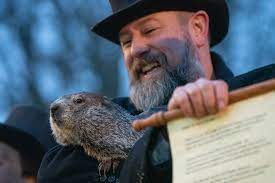Every year on February 2, Punxsutawney Phil emerges from his burrow in Pennsylvania to predict the forecast for the coming months.
Groundhog Day originated from the German holiday called Candlemas. (A Western Christian festival observed in the Roman Catholic and Lutheran churches.)
During this festival, a badger would come out of the ground to predict the weather. When Germans immigrated to the United States and Canada, the day became known as Groundhog Day.
The legend says that if the groundhog sees their shadow on this day, he will return to his burrow, and another six weeks of winter will follow. If he does not see his shadow, there will be an early spring.
This year Punxsutawney Phil was greeted by thousands of onlookers as he predicted an early spring. But is this legend accurate or just fiction?
According to an Instagram poll, fifty-five percent of Leesville students believe Groundhog Day is not an accurate way to predict the weather.
Matthew Jameroz, sophomore, and Groundhog Day skeptic said, “It is a groundhog, and if it can predict the future, why can’t I predict mine?”
Other students are more enthusiastic about the tradition.
Abby Coughlin, sophomore, said, “I do think [Groundhog Day] is accurate because Mr. Punxsutawney Phil predicted an early spring and this weekend is going to be seventy degrees!”
Coughlin also added that she loves Punxsutawney Phil, then proceeded to spell out his name from memory.
Whether you believe Groundhog Day is a joke or you anticipate Phil’s predictions every year, the tradition always sparks an amusing conversation.


Leave a Reply